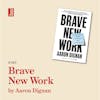Let's Talk Culture by Shane Michael Hatton: how communication is the key to culture
About the book
Packed with research-based insights from Australia’s leading workplaces, Let’s Talk Culture is the how-to guide for people leaders who want to shape a world-class team culture by design.
Successful leaders and organisations know that culture is the unseen advantage of world-class teams. But can it be influenced? And what role do managers play in building and shaping it?
Author and expert in leader communication, Shane Michael Hatton, says the research suggests it can be influenced and that the people leader plays a crucial role — but it all starts with effective communication.
Based on extensive research with people leaders on the ground, Let’s Talk Culture reveals the five practical conversations people leaders need to have to design a world-class team culture within their organisation.
An easy-to-understand guide for future culture champions, this book will give you the tools to build a team that attracts and retains your top talent, confidently address cultural inconsistencies in the workplace and meaningfully reward the behaviours that strengthen your team culture.
Source: https://majorstreet.com.au/collections/coming-soon/products/lets-talk-culture-shane-michael-hatton
About the author
Shane Michael Hatton is an expert in leader communication, blending his experience in business and psychology to help leaders communicate, connect and collaborate more effectively in order to bring out the best in those they lead. As a speaker, coach and trainer, Shane has partnered with well known and loved businesses across the public, private and not-for-profit sectors. He is a Gallup-Certified Strengths Coach and the author of Lead the Room: Communicate a message that counts in moments that matter.
Source: book cover
Big idea #1 — What is culture?
This is a good place to start because it is hard to define. Two thirds of managers who were part of the research for this book were confident that they could define culture, but when they were asked to do so. The definitions were pretty vague and generic, or just taken straight from Google.
One of the things the research did find is that there were four different commonalities in the culture definitions.
- There was a collective element: culture is a shared experience.
- There is an unseen element: it is a bit abstract, intangible, and hard to measure.
- There is an observable element: there are observable inputs in terms of the behaviours and practices that make a culture.
- There is a social learning element: culture is learnt and it is dynamic.
There’s a group of leaders referenced in the book as ‘the 11%’, who seem to have a stronger grasp of culture and their impact on it. There were 11 things they knew to be true about culture:
- it can be influenced
- it is the little things
- it’s not static
- it needs a leader
- it is key to success
- it needs trust, transparency and learning
- it needs clarity
- that it can be challenged
- that it takes time
- that training pays off, and
- it shifts performance.
Big idea #2 — Communication is culture
So many cultural issues are made or broken by the quality of communication. When we communicate well, though, we can resolve all sorts of issues.
Shane says that culture has three challenges, the definition, the leadership, and the skills required.
Half of the people leaders in the study told the researchers that they somewhat or strongly agreed that culture is not something that can be influenced. But that’s incorrect, culture needs intent, and it needs strategy, and it needs leadership participation. Leaders do this though the everyday conversations that build culture.
There’s five elements or characteristics to those culture conversations; trust, vulnerability, empathy, curiosity, and safety. Your role as a leader is to build and role model those in order for culture conversations to happen.
Big idea #3 — Culture conversations
There are five different conversations that you need to have in order to build, maintain, adapt, change, influence a culture in an organisation.
- The expectation conversation: naming it and making the unspoken spoken.
- The clarification conversation: making the invisible observable.
- The communication conversation: give culture a language through sharing stories.
- The confrontation conversation: having feedback conversations in a really healthy, productive, constructive way and doing that well so that people know what is important.
- The celebration conversation: calling out the good stuff to inform those stories and helping people to see what good looks like.
Having the discipline around these conversations as a leader with your teams will greatly help overcome the lack of clarity people have around culture.
Support my book habit: https://www.buymeacoffee.com/stephsbookshelf
See omnystudio.com/listener for privacy information.
Hey, have you subscribed to the bookmark newsletter? If you liked this, you might like my twice-monthly email with book reviews and ideas of what you should be reading, and listening to, next. Click here to subscribe.
Popular episodes
Here are some great episodes to start with.

















